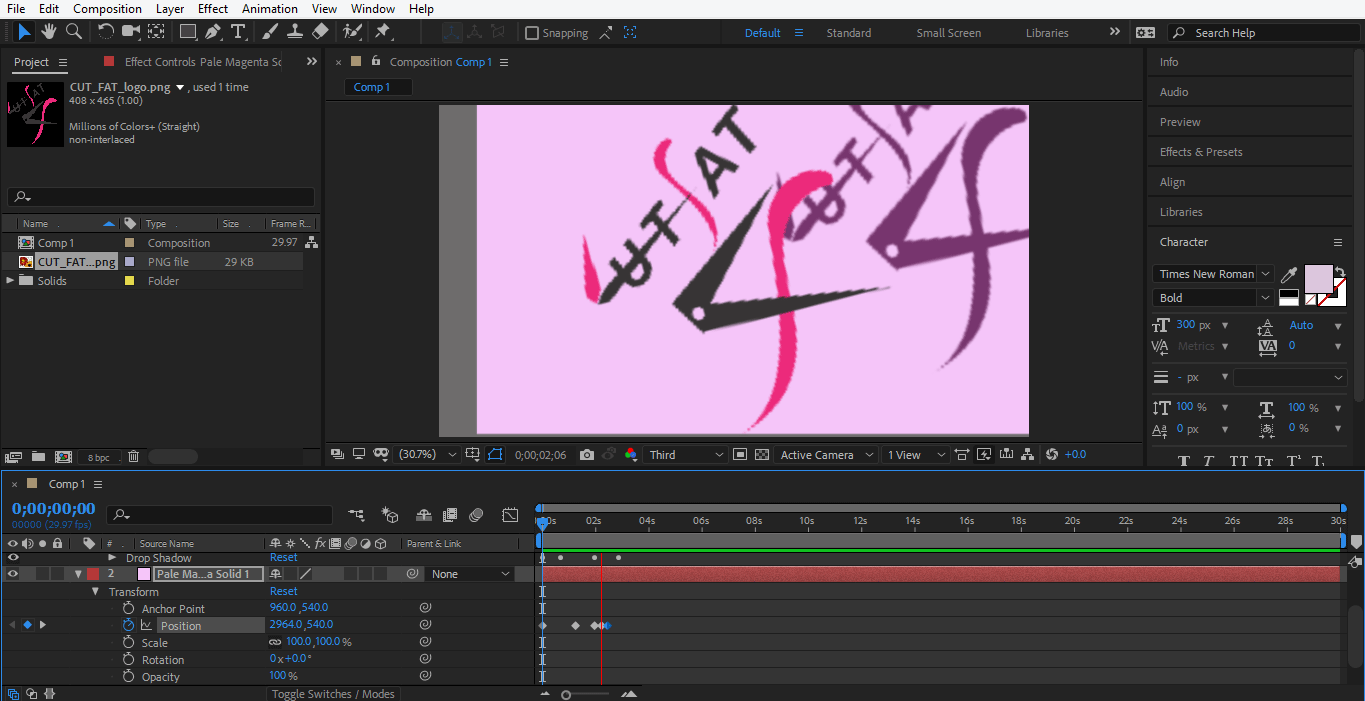


To fix the Z appearing while the logo forms, you only need to use the pen tool to create a mask, masking the “Z” behind the logo. It looks great, but the Z letter animates over the background layer, which is visually wrong. Let’s return to the primary composition and review. We’ll adjust the speed of this drop-down later, focusing on the basics of the animation for now. We need to space these keyframes out as if we’re letting gravity do its thing. As we progress, it gets slower and slower. Next, we want the Z to come down and shake a little bit, following the speed of the drop-down. This will make it fall down naturally, but we’ll fine-tune this later. Increase the speed a bit and ease it out. Bring it up until it’s out of view, set a keyframe, advance one second, and then bring it back down to zero. Now, let’s focus on rotation, specifically the X rotation. If you don’t have an anchor sniper script, press “A” to bring up the Anchor Point, and place it wherever you want. Open the “Logo Animated” pre-comp, and convert the text layer into a 3D layer. Then, I’ll move a few frames ahead and increase it to 100. I will set a keyframe at the start of the timeline and change the x-axis scale to 0. For instance, with the scale proportions link deactivated, decreasing the scale along the x-axis gives the illusion of rotation. Instead of 3D layers, we’ll mimic rotation by adjusting the scale. To animate the logo, we’ll use a different technique for rotation. With the background layer selected, change the matte to “Logo Effects,” and click to invert it. Duplicate it, then pre-compose it as “Logo Effects” and “Logo Animated.” Animating the Logo Effects I will use a cool “Z” font for the animation. Let’s call it “Zach’s Gaming” for this tutorial. Next, use the letter of your brand, company, or gaming tag. Rename this layer to “background stroke” and then turn it off. Increase the scale to about 102 for a bit of distance around the circle. Label this layer as “background.” Now, duplicate the shape, turn off the fill, and turn on the stroke. Position the shape at the center, change its colors to your liking, and turn off the stroke if active. Drag the mouse to create the shape, and holding Shift will ensure equal proportions. It can be any shape you like, and you can even import a PNG. Let’s start by using the shape tool to create a shape of your choice for the basis of the logo. I’ve created a new project with a 15-second composition. You may find yourself in difficult waters if you try to follow the steps without watching the video. As a forewarning, the written guide below is to be a direct companion to the video.


 0 kommentar(er)
0 kommentar(er)
